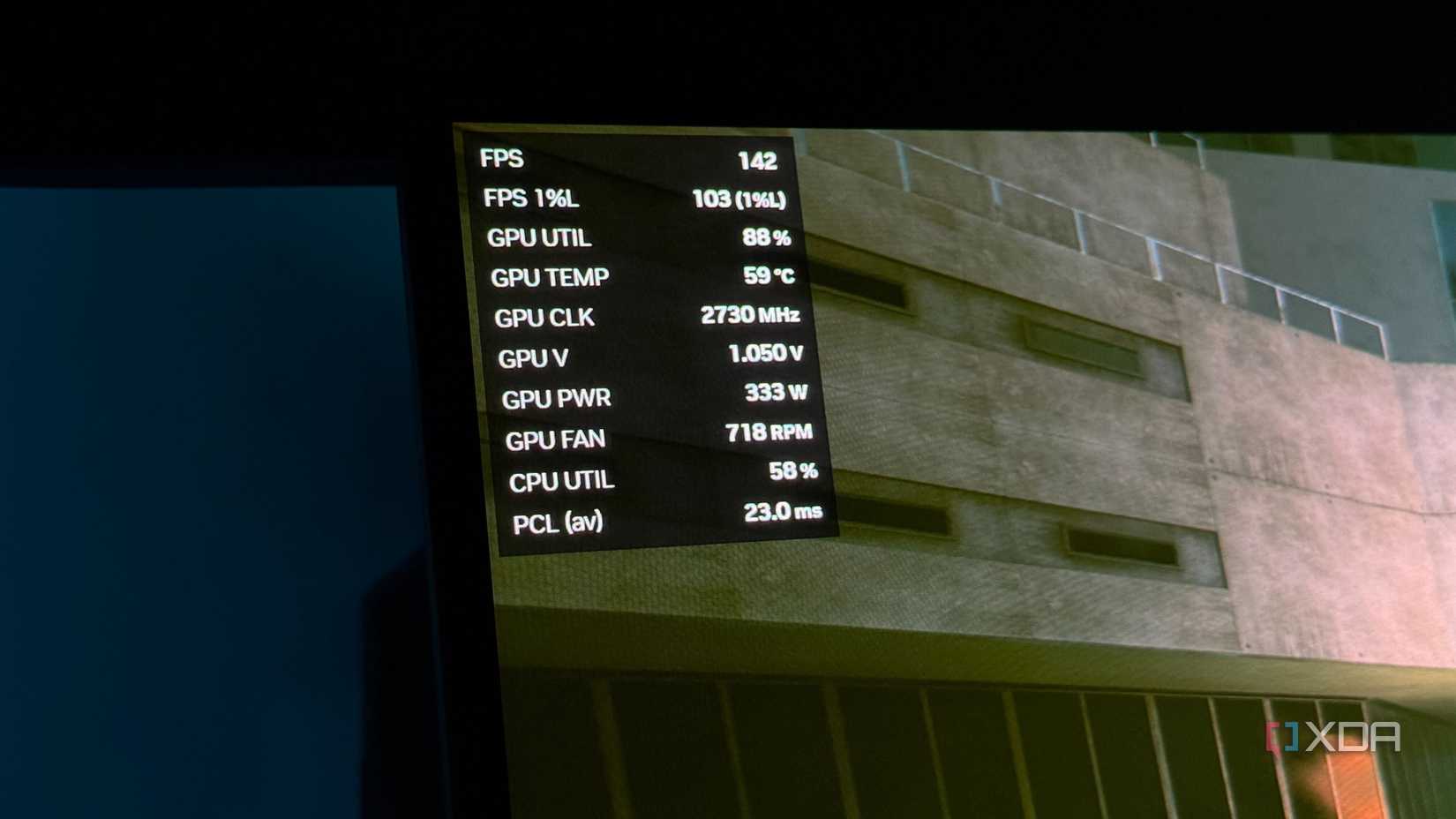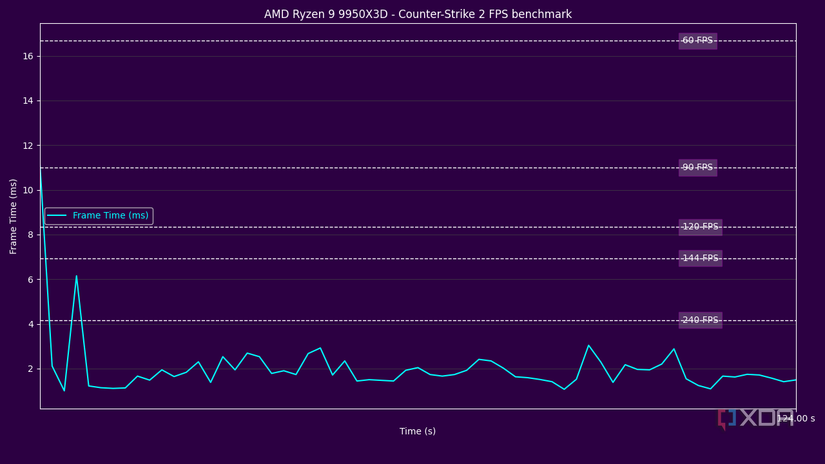Hamlin has been in the tech field for over seven years. Since 2017, his work has appeared on MakeUseOf, OSXDaily, Beebom, MashTips, and more. He served as the Senior Editor for MUO for two years before joining XDA. He uses a Windows PC for desktop use and a MacBook for traveling, but dislikes some of the quirks of macOS. You're more likely to catch him at the gym or on a flight than anywhere else.
Large L3 cache is one of the standout features of AMD's X3D CPUs, such as the 9800X3D and 9950X3D. It's a big reason why AMD has consistently outperformed Intel in gaming benchmarks. Reviewers usually focus on the average FPS gains, which makes these CPUs look very impressive, but that only scratches the surface of what a larger cache can really do. Once you start using one of these X3D CPUs and monitor your PC closely, you'll realize that the benefits go beyond just average frame rates.
When I replaced my Ryzen 9 5900X with the Ryzen 7 5800X3D, I was quickly surprised by how much better every game felt. On paper, I had "downgraded" to a CPU with fewer cores and lower clock speeds, but the massive 96MB of L3 cache made gameplay smoother than ever. The benefits were most noticeable in CPU-bound competitive shooters like Valorant and Counter-Strike 2. That experience showed me that AMD's X3D CPUs aren't just about topping benchmark charts; they've earned their reputation because of the consistent smoothness I noticed while gaming.
Better scaling with high-end GPUs
Large L3 cache helps minimize CPU bottlenecks at higher refresh rates
Many people assume that CPU performance doesn't matter nearly as much at higher resolutions like 1440p and 4K, since the GPU is usually the limiting factor. While that may be true to an extent, it doesn't mean you won't benefit from a CPU with a large L3 cache. I know this because when I paired my RTX 4090 with my 5900X, the GPU sat underutilized across many games. In the worst cases, GPU usage would dip below 70% even at 4K in CPU-bound titles like Valorant and Apex Legends. This made me realize the problem wasn't my GPU, but the CPU struggling to keep up with it.
Once I switched to the 5800X3D, GPU usage increased significantly across the board, often resulting in a 20–30% improvement in frame rates. I was glad that I could finally push my RTX 4090 to its limits, mainly because the large L3 cache provided the 5800X3D with enough bandwidth to keep feeding data to my GPU without stalling. That's when I learned that scaling with a high-end GPU isn't just about raw core count and clock speed. Cache size can make a bigger difference in how well your CPU and GPU work together.
Improvement in 1% and 0.1% lows
Smoother lows matter just as much as higher average frame rates

Average FPS numbers get most of the attention in benchmarks and reviews, but anyone who plays demanding AAA titles or competitive shooters knows that the 1% and 0.1% lows determine how smooth a game actually feels. For instance, you may not notice the difference between 100 and 120 FPS on average, but you will definitely notice stutters when the frame rate suddenly dips into the 60s or 70s during an intense gunfight. That's where a CPU with a large L3 cache makes all the difference.
When a CPU has a large L3 cache to work with, it can hold more of the game data close to the core instead of constantly fetching from your RAM. This reduces latency and prevents the sharp frame drops that drag lows far away from the average. When I switched to the 5800X3D, I was more impressed by how much higher the 1% and 0.1% lows were compared to my 5900X. Regardless of the game, I rarely encountered stutters that used to break the flow during demanding scenes. If you're looking for consistently smooth gameplay, a CPU with a large L3 cache may be the upgrade you need.
Reduced frame time spikes
A massive L3 cache can act as a buffer against major stutters

While higher 1% and 0.1% lows make gameplay feel smoother overall, there's another aspect of consistency that's worth highlighting: frame time spikes. These aren't the same FPS dips you experience over a sustained period, but the sudden hiccups that happen when your CPU stalls for a split second. I'm talking about a scenario where you're moving around in a game and suddenly the game freezes for half a second when you enter a new area or a group of enemies spawns in.
I remember experiencing this while playing Cyberpunk 2077 at launch on my 5900X. My average FPS was decent, and the 1% lows weren't bad by any means; however, the hitches that occurred whenever the game loaded new assets were extremely annoying. And that was despite running the game on a PCIe 4.0 SSD. Now that I have a 5800X3D, I rarely encounter such issues. That's mainly because its massive 96MB of L3 cache allows it to be far less reliant on system memory. These little improvements make me appreciate the large L3 cache on X3D chips more than any benchmark chart ever could.
The real-world benefits go beyond benchmarks
I watched several reviews and benchmark videos before I decided to get the 5800X3D, but none of them truly conveyed how much better gaming feels on a CPU with a large L3 cache. While the average FPS gains are nothing short of impressive, they only scratch the surface of what AMD's X3D chips bring to the table. From higher 1% and 0.1% lows to fewer frame time spikes and better scaling with high-end GPUs, you end up with a CPU that ages like fine wine. It's the kind of upgrade that doesn't just show up in benchmarks but makes a real difference in every gaming session. Once you experience the benefits firsthand, it's hard to go back to a CPU without the extra cache.
.png)












 English (US) ·
English (US) ·